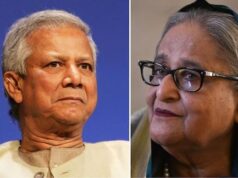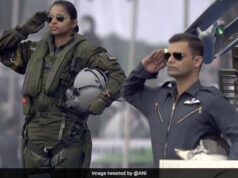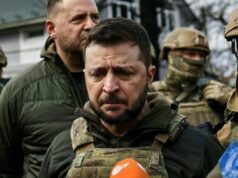The Tribes Of Yore : The Brokpas Of Ladakh
‘When exploring Ladakh, be a traveller not tourist’….Anonymous
.png)
By
COLONEL SATISH SINGH LALOTRA
Perched high in the Himalayas, the cold desert of Ladakh conjures up images of Bactrian double humped camels, the ever elusive snow leopards, the aquamarine cold water of River Indus and off course the ubiquitous maroon robed Lamas with their rosaries in their hands going about their daily routine without a care in the world. Ladakh a region as a UT, which is bordered by the TAR (Tibetan autonomous region) in the east, the Indian state of Himachal Pradesh to the south, both the Indian union territories of J&K, and the Pakistani occupied area of Gilgit Baltistan to the west and the south western county of Xinjiang across the Karakorum pass is an out of the world place. The moment one conjures up the images of Ladakh he/she is immediately transported to the world of whistling mountain passes, the like of which are not witnessed anywhere in the sub-continent.If one closes one’s eyes he or she may see stray monasteries straddled on hill tops, white washed walls and wooden panes with roofs painted as red.
Armed forces of the country offers you many chances to visit such places which are off beat in nature in our sub-continent.One cannot visit Ladakh without noticing the funny road signs that the BRO(Border roads organization) has put up all along the major roads of this region. Just take out your camera, whatever make it may be and go on a clicking spree.I have had the good fortune of visiting Ladakh twice in my service career, once in 1986 and thereafter in 1995. To my amazement not much had changed in the intervening years of 1986 to 1995, except for an increased footfall of the army. Today surprisingly Ladakh has become the cynosure of every Indian’s eyes primarily due to Bollywood movies like ‘3 Idiots’, followed by hordes and hordes of flight carrying families ,couples ,gangs of friends to Leh and beyond. Coupled with this fact is the announcement by the Modi government few years back of making ‘Nubra valley’ and ‘Siachen glacier’open for tourist influx to give a boost to eco-tourismthat has acted as a booster dose to uplift the entire mood of this region.
The fall of 1996 ( Sep/oct) saw me with my troops doing ‘Rest & recoup” (R&R) at Leh after our Siachen glacier tenure . Exploring Leh town and its surroundings to include the various monasteries and the TRCs (Tibetan refugee camps) to know first-hand the state of our troop’s families took our majority of time. But the area of Ladakh is not only famous for its varied topography but is also home to countless fairs and its accompanied razzmatazz of colours, sights and sounds. One such fair or festival which is eagerly awaited even today is the ‘Ladakh festival’ which generally happens in the month of September every year. The Ladakh festival of 1996 was no different. It attracted lots of people, tourists of all hues, foreigners from all over the world. Since our troops were doing R&R at Leh, I too happen to visit this world famous ‘Ladakh festival’ which is a 4 day extravaganza show casing the cultural richness of different communities and tribes of Ladakh. Organised by the ‘Tourism department ‘ of Ladakh, the event includes the traditional folk dances and songs ,vernacular sports like polo games, archery and exhibitions of ‘Thangka, handicrafts, monastic dances, food festivals, and local ‘Chang’(liquor) testing sessions.It was during this ‘Ladakh festival’ that I happened to interact with a number of Ladakhi tribes in all their finery. But what struck me most was a peculiar tribe which stood out from the rest of the crowd during these festivities. Sporting more of Eurasian features unlike the ‘Mongoloid ‘ones which Ladakh is so full of, these people had aquiline noses, high cheek bones , and a very fair complexion to boot. One curiosity led to another and I came to know about this lost tribe of Ladakh which I am sure most of us will also be ignorant about.
In a corner of Ladakh lives a tribe relatively unheard of –The Brokpas of Ladakh. They wear beautiful head dress, have long tresses, flowing sheep skin coats and till about early 1990s had probably never stepped out of their villages. A Little about 180 kilometers away from Lehlie 4 villages, nestled deep in the mountains. These are the villages of Dah, Garkan. Hanu and Darchiks. Known as the ‘Brokpas’ these tribals inhabit the villages mentioned and are a constant source of enigma to the outside world. Lots of stories are doing rounds that these people are the direct descendants of ‘Alexander’s army who stayed put even after the world conqueror left Indian Territory and hence they are pure ‘Aryans’ . In fact a similar claim is made by the locals of ‘Malana‘ in Parvati valley of Himachal Pradesh too. But in the case of Brokpas there is no historical documentation conferring their existence in the neighbouring Himachal Pradesh. But the tourism department of Ladakh goes head over heels to woo especially these Brokpas and try various means to get them to a show window to project Ladakh’s image as an ultimate tourist destination. As per the elders of this fine race, they are the ‘Dards’ from ‘Gilgit Baltistan’ and came to this cold desert some 2000 years ago. They have a separate language known as ‘Shina’ which is spoken in the neigbouring part of Northern Pakistan too.
Since I have served in Gurez valley too which is inhabited by a vast swathe of ‘Dards’ I have realized that these ‘Dards’ are different from those obtaining in the cold desert of Ladakh. Primarily the ‘Dards of Gurez valley are shia muslims , whereas the ‘Dards of Ladakh are more or less Buddhist may be coming under the influence of the majority religion of Ladakh. Actually according to some noted anthropologists the ‘Dards’ of Ladakh are living in this cold desert for the last 5000 years or so which makes them one of the oldest living beings in this part of our sub-continent. The UT of Ladakh has off late started bus services for these 4 villages of Brokpas, with the early morning bus leaving Leh town at about 7 am. During the mid-90s there used to be hardly any bus services for this region. These 4 villages of Brokpas lie on the banks of River Indus. While Hanu, Dah, Biama and Garkan lie on one side of the river, the villages of Darchiks and Baldez are on the opposite side and can be reached via bridges on River Indus.Almost all the villages have green pastures, Barley, buckwheat, tomatoes and apricots grown in plenty. As per a documentary made on the Brokpas there are certain stories doing rounds that of German women coming to these places to have babies with Brokpamen to have a clear line of Aryan lineage in their families.
As for the traditional dresses worn by this race, the headgear worn by these Brokpas are known as ‘Tepi’ and has an assortment of colourful props and berry flowers. The elders of Brokpas say that since there are lots of medicinal properties in these flowers and moreover the area of cold desert devoid of any medical facilities, these headgears come very handy in any emergency. The women wear heavy metal silver jewelry (they believe it wards off evil spirits), sheep skin capes, and sheep wool pherans .Coins are often added to the costume to give it a classy look. Men mostly wear maroon colour robes and cummerbunds. As the hearsay goes in this land of Brokpas , it is understood that initially three brothers Galo, Melo and Dhulo came down from the high lands of Gilgit to Ladakh crossing the Deosai plains in search of greener pastures and settled thereafter in this land. Their descendants are known as Brokpas to the world at large. They are generally endogamous – that is they marry within their own community only. Approximately numbering 2000 odd Brokpas are in the reckoning in this cold desert of Ladakh as of today. The local custom and tradition on which a Brokpa family is built upon believes that they have to wait at least 3 generations from both sides to make sure no siblings are intermarried. However strangely they can marry their sister’s granddaughter.
The Brokpa Dards are obsessed with purity and they worship the mountains, rivers, and the land on which they reside. Though under a strict influence of Buddhism, these people also practice an animist religion called as ‘Bon’ religion. Interestingly Bon followers also visit Mt Kailash since they hold in reverence Lord Shiva too. It seems all too confusing for a rational mind to absorb these facts. Whether or not the Brokpas will be able to hold onto their heritage and unique cultural lineage, or fall prey to the temptations of tourism and the glamour of city life, only time will tell. But the only abiding hope in such tribes is that they keep the bouquet of Indian cultural diversity alive and kicking in such a far off place.




